Picture this: while your competitors are still debating last quarter’s campaign performance in lengthy meetings, you’ve already identified profitable customer segments, optimized ad spend, and personalized messages for prospects, all before lunch. That’s the power of business intelligence for marketing in action.
Today, the global business intelligence market is projected to grow from $36.82 billion to $116.25 billion by 2033, reflecting companies’ desire to turn raw data into competitive advantages. Evidently, by empowering marketers to build a data-driven marketing strategy, BI is now a competitive requirement to outpace rivals, optimize spend, and truly understand the customer at every touchpoint.
Benefits of Using Business Intelligence in Marketing
Transitioning from isolated data to integrated insights offers strategic benefits. Companies that adopt BI gain an immediate edge over competitors relying on outdated reporting or manual analysis. Let’s explore the main advantages of marketing business intelligence.
- Deeper Customer Insights: BI tools connect data across the customer journey, revealing insights beyond what individual platforms show. This unified view helps analyze customer behaviors, show the reasons behind actions, and anticipate needs. Companies can then deliver the personalized experiences important for retaining clients.
- Improved Campaign ROI: With business intelligence for marketing, campaign tracking becomes continuous and multi-faceted. Marketers can quickly identify top-performing channels, messages, and segments, enabling real-time budget adjustments and ROI increase.
- Faster Decision-Making: Traditional marketing relies on intuition and delayed reporting. In contrast, business intelligence offers real-time dashboards with actionable insights, enabling managers to spot declining patterns or critical data early. This makes it possible to address issues quickly.
- Stronger Competitive Advantage: Competitor analysis with BI goes beyond monitoring rivals. Advanced BI platforms track pricing strategies, identify market gaps, and detect shifts in customer preferences early. This competitive edge improves as data and predictive accuracy grow.
- Better Cross-Department Alignment: Marketing rarely works alone, and traditional methods often isolate marketing, sales, and customer service. Business intelligence for marketing unites these teams with shared metrics and a common customer perspective, improving consistency and increasing revenue by about 10%.
Key Business Intelligence Tools for Marketing
The range of business intelligence tools for marketing is extensive, and the right mix of those is important for implementing an effective data-driven marketing strategy.
Data Visualization Tools
Data visualization platforms turn complex datasets into intuitive charts, graphs, and dashboards that highlight patterns instantly. Since data-driven organizations are seven times more likely to retain customers and nineteen times more likely to be profitable than their peers, these tools are essential for your marketing toolbox.
Platforms like Tableau or Google Looker Studio convert large, complex datasets into clear, easy-to-understand charts, graphs, and dashboards. They help non-technical users to quickly identify trends, assess campaign performance, and track key performance indicators (KPIs) without having to sift through spreadsheets.
Customer Analytics Platforms
Customer analytics platforms focus on gathering customer data from various touchpoints to create detailed profiles and monitor behavior patterns. These marketing BI tools compile information from your website, mobile app, email campaigns, social media, and purchase history to provide a single, unified customer view.
Powerful consumer analytics aren’t just the cornerstone of effective targeting. They’re essential to charting a profitable path through an uncertain future 🛣️
Just ask the inclusive beauty brand @livetinted.
Even amid the chaos of the pandemic, Live Tinted still knew exactly… pic.twitter.com/ltdqK3FKVE
— John Chao (@johnychao314) October 30, 2024
Tools like Mixpanel or Amplitude focus on understanding user behavior within an app or website. They also excel at mapping the customer journey, identifying drop-off points, and segmenting users based on their actions. This in-depth customer insights analysis is important for refining your product content.
Competitive Intelligence Tools
Competitive intelligence platforms monitor your market landscape by tracking competitor activities, industry trends, and emerging opportunities. Combining these with your own performance data produces stronger competitive analysis with BI.
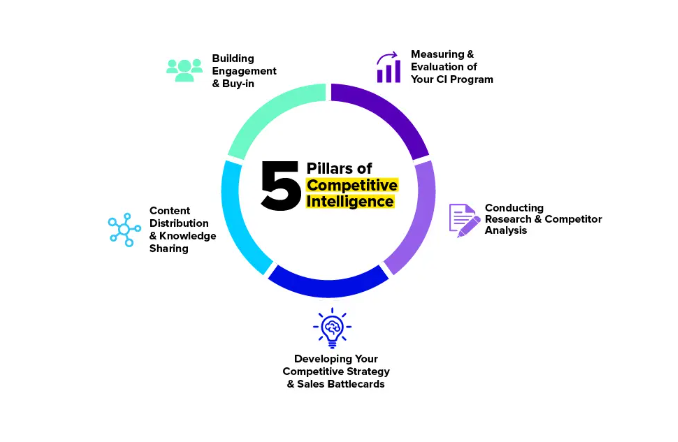
SEMrush and SimilarWeb are great examples of tools that offer insights into competitor keywords, advertising strategies, traffic sources, and content performance. These platforms assist you in benchmarking your performance against industry standards and spotting content gaps that competitors haven’t noticed.
Marketing Automation with BI Integration
While primarily focused on workflow efficiency, modern b2b marketing automation platforms are increasingly integrating BI features. This two-way connection allows you to coordinate campaigns and assess impact more effectively.
Platforms like HubSpot and Marketo use built-in analytics to automatically segment audiences, identify the best times to send messages, and score leads based on engagement data. This combination of execution and intelligence speeds up the path from lead capture to conversion.
Predictive & Augmented Analytics Tools
Predictive analytics in marketing represents the peak of BI capabilities, using machine learning algorithms to determine future outcomes based on historical patterns. In fact, AI in marketing statistics show that companies leveraging AI in marketing see 20-30% higher ROI on campaigns compared to those relying on traditional methods.
Predictive analytics is transforming marketing by forecasting customer behavior, optimizing campaigns, personalizing experiences, and helping businesses stay competitive, reduce costs, and boost engagement in 2025.
Read more: https://t.co/891BTa45Ik#DataDriven #Tech— SPERIDIAN (@speridian) December 26, 2024
Another use of predictive analytics is with marketing budget planning tools that track historical spending, predict future needs, and enable detailed cost allocation by channel or campaign. When assessing your digital marketing budget allocation, having access to tools that clearly display spending alongside performance can be a huge advantage.
How to Use Business Intelligence for Marketing Success
Successful implementation of marketing BI is less about the software and more about establishing repeatable processes that embed data into every strategic decision. Let’s walk through the best ways to use BI marketing tools.
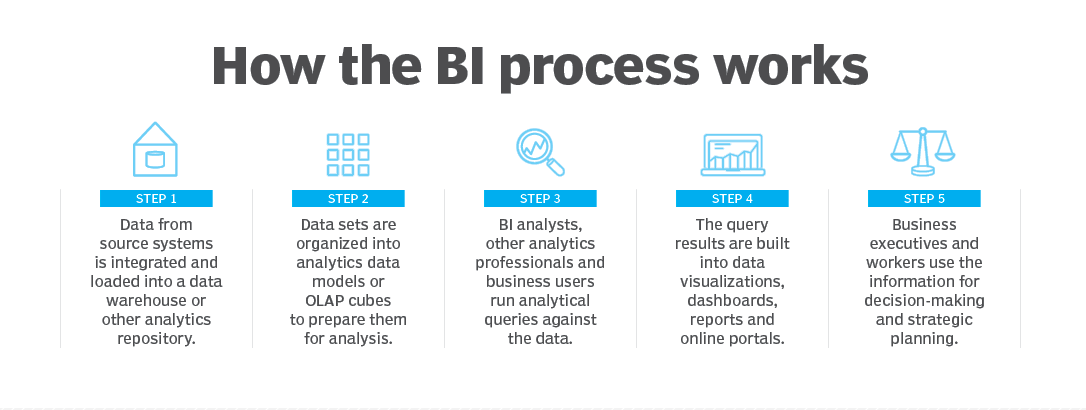
Collect and Consolidate Data Across Channels
An effective marketing strategy starts with comprehensive data collection that captures the full range of customer interactions. This involves populating your common system repository with information from your:
- Email marketing platforms
- Social media analytics
- SEO performance tools
- PPC advertising systems
- CRM
Different departments may use different data points that provide conflicting results. However, consolidation removes these inconsistencies by creating a single source of truth. Start by identifying all the platforms where customer interactions happen, then use data integration tools or ETL (extract, transform, load) platforms to automatically pull this information into your BI system.
Analyze Customer Behavior and Preferences
Customer Behavior Analysis is essential for understanding customer habits, preferences, and motivations, helping businesses tailor their marketing, product development, and customer service. Once data flows into your BI platform, focus on understanding what your customers do and why they do it. Then segment them based on behavior patterns rather than just demographics.
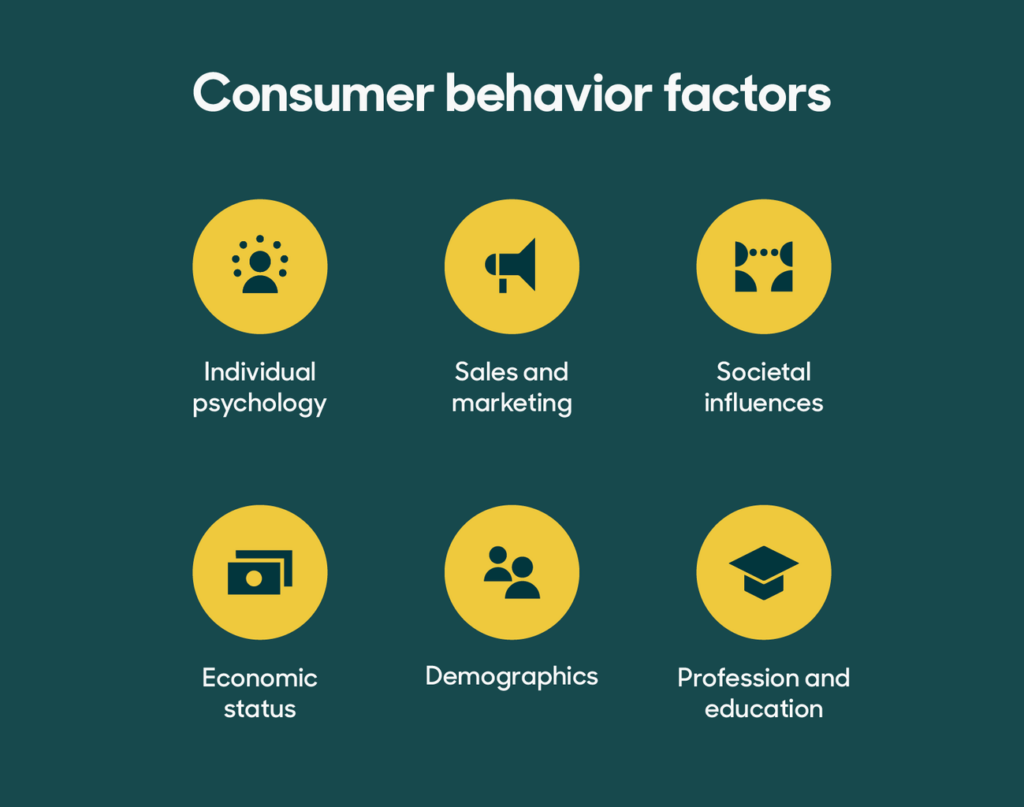
That means grouping customers by their purchasing frequency, content consumption habits, preferred communication channels, and responses to different offer types. Next, identify patterns in the customer journey that indicate purchase readiness and find opportunities to refine your approach. This allows you to personalize outreach based on where each prospect is in their journey.
Optimize Campaign Performance in Real Time
Campaign performance tracking shifts from a retrospective task to an active management practice with BI. Create live dashboards that track key performance indicators as campaigns run, including:
- click-through rates
- conversion rates
- cost per acquisition
- engagement metrics across all channels
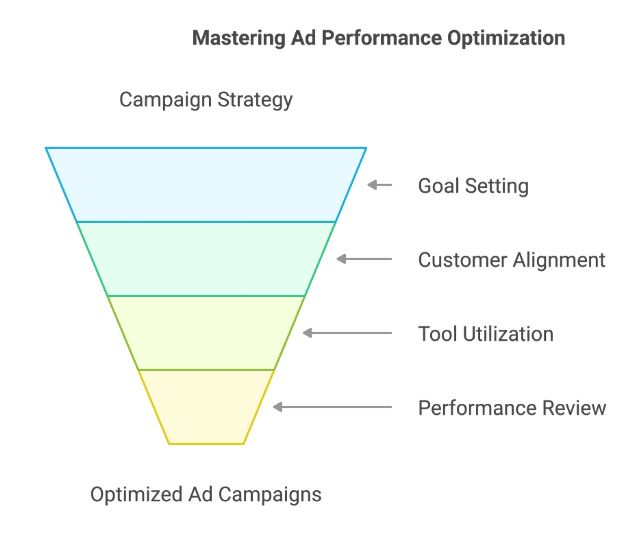
When you notice underperformance, don’t wait for the campaign to end. Instead, pause low-performing ad variations, reallocate budget to high-converting channels, or adjust targeting settings based on what’s resonating.
Align Sales and Marketing Through BI
One of the most powerful applications of business intelligence for marketing is creating shared visibility between sales and marketing teams. Implement unified metrics that both teams track, such as:
- Marketing-qualified lead conversion rates
- Sales cycle length by lead source
- Revenue generated per marketing campaign
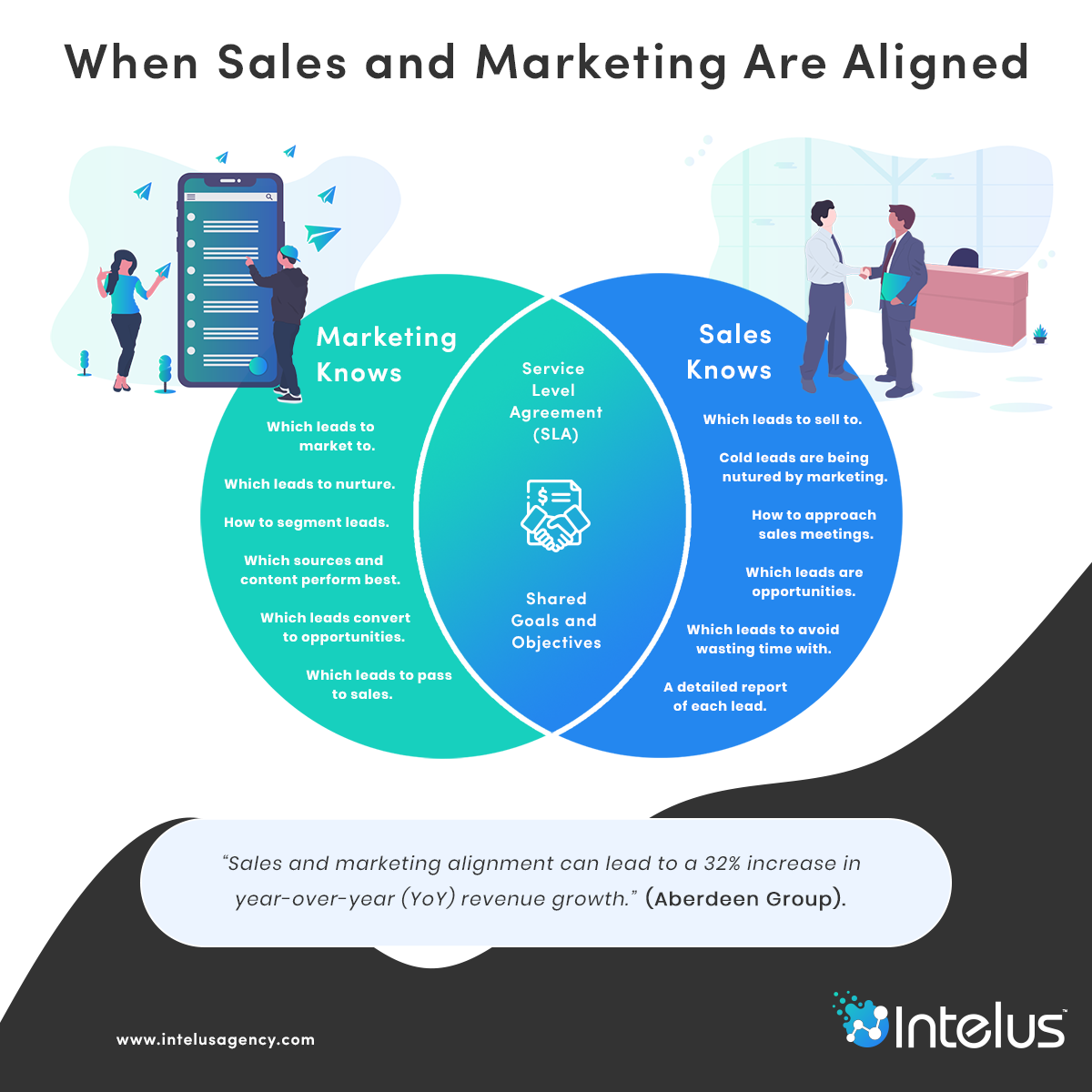
In the marketing world, BI uses customer data and analysis tools to tailor campaigns for target audiences. This shared understanding, supported by data analytics in digital marketing, guarantees a consistent customer experience and more effective lead management.
Predict Future Trends With BI Analytics
The true value of marketing business intelligence is in its ability to predict future trends. Use past data to forecast seasonal demand, identify which customer segments will grow or shrink, and spot emerging market opportunities before competitors do. So, create models that predict customer lifetime value based on early behavior signals, allowing you to focus more on gaining high-value prospects.
Examples of How Business Intelligence Helps in Marketing
The power of BI is best illustrated by its practical application in diverse business settings. This case study highlights how translating data into insights leads to measurable business outcomes.
Case Study: Optimizing Product Promotions in Retail
A large e-commerce retailer realised they were sending out too many generic promotional emails, resulting in low open rates and high opt-outs. They implemented a BI platform to analyze customer purchase history, browsing patterns, loyalty program data, and seasonal trends. The system identified three distinct, high-value customer segments:
- “Early Adopters” who only bought products within the first week of launch.
- “Bargain Hunters” who only bought items discounted by 40% or more.
- “Brand Loyalists” who consistently bought only one specific line.
Based on these customer insights, the marketing team stopped sending generic messages. Instead, they used the BI data to power an automated system that exclusively sent new product alerts to Early Adopters, 40%+ discount coupons to Bargain Hunters, and exclusive pre-orders to Brand Loyalists.
The result was a boost in email-attributed revenue and a notable drop in customer unsubscribe rates, demonstrating effective marketing ROI measurement.
Best Practices for Implementing Marketing Business Intelligence
While the benefits are clear, adopting marketing BI requires a thoughtful approach to ensure long-term success. Let’s look at the important steps you need to take in your implementation.
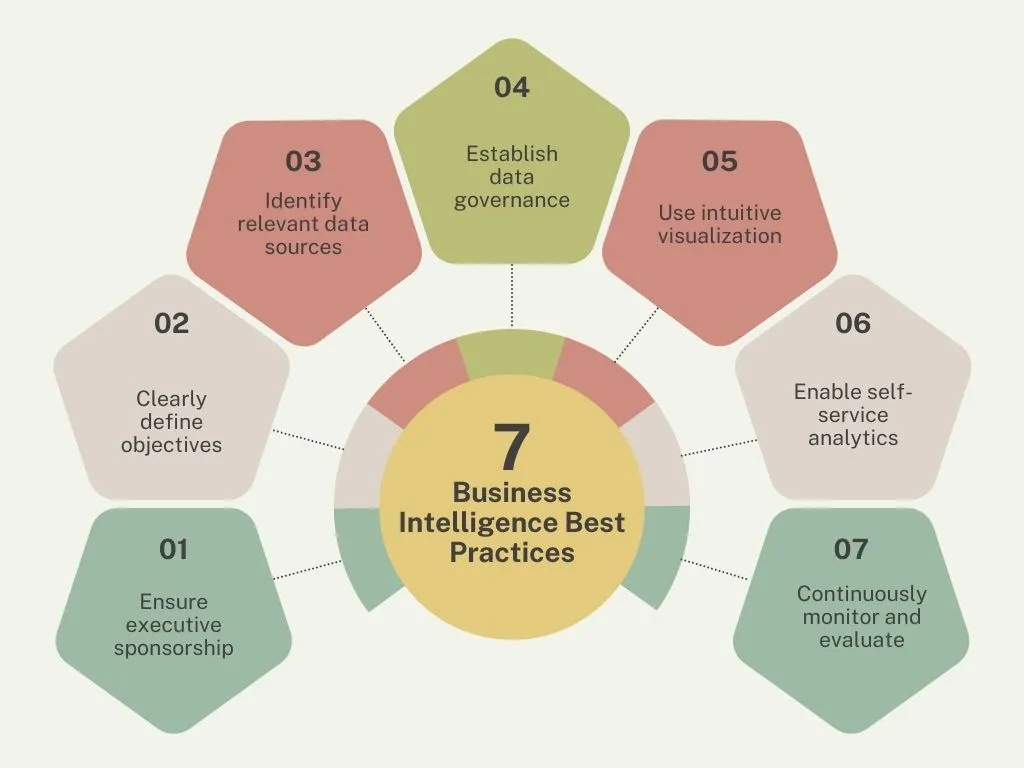
- Define Clear Marketing Goals Before Selecting BI Tools: Before investing in any of the business intelligence tools for marketing, clearly outline what you need to measure and why. Without clearly defined KPIs, any BI initiative risks becoming “data for data’s sake.”
- Ensure Data Accuracy and Integration Across Platforms: The insights you discover are only as reliable as the data feeding your BI system. Therefore, ensure you implement data governance practices that maintain consistency in how information is captured, labeled, and stored across different platforms.
- Train Teams to Interpret BI Dashboards Effectively: The top BI platform is ineffective if your team misinterprets the data. So invest in digital training to improve team members’ understanding of statistical concepts and when to trust automated insights.
- Start with small pilot projects before scaling BI company-wide: Instead of trying to implement comprehensive BI across your entire marketing operation at once, start with a focused use case that clearly shows value. These “pilot projects” let you improve your approach and identify unexpected issues.
Challenges in Using BI for Marketing
Despite the transformative potential of BI, several common issues can derail adoption and implementation. We’ll go over these problems and their solutions below.
- Data overload without clear KPIs: Define enterprise-level and campaign-level KPIs, then streamline dashboards to focus on those metrics.
- High costs of advanced BI platforms: Assess ROI on pilot projects, implement modular architectures (CDP + BI visualization), and negotiate pricing based on outcomes.
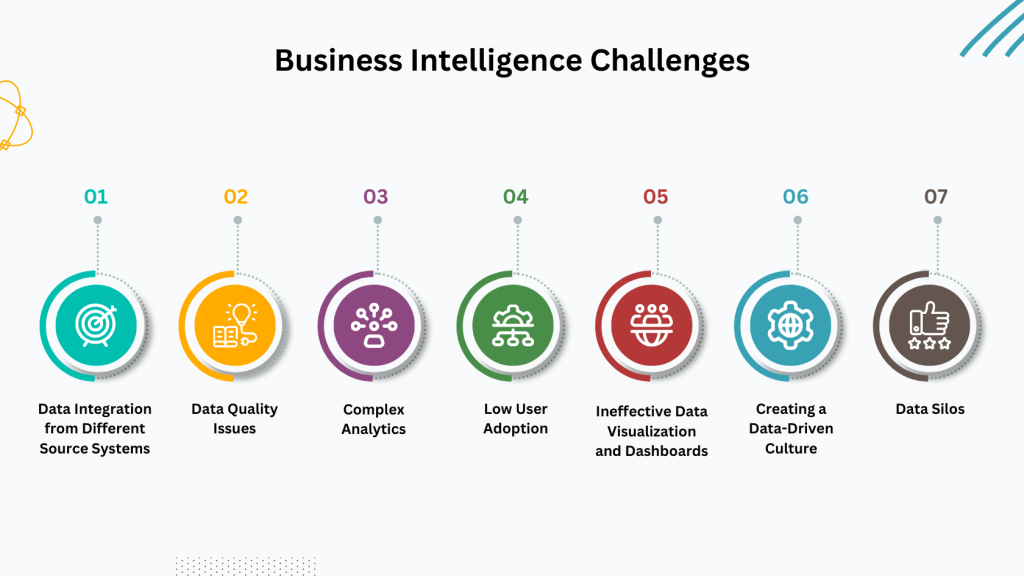
- Integration difficulties with legacy systems: Utilize middleware, API connectors, and incremental migrations to prevent full-scale rewrites.
- Resistance to BI-driven decision-making: Engage stakeholders early, showcase small wins openly, and integrate BI outputs into regular workflows so the benefits become visible.
Business intelligence has transformed from a specialized technical capability into a fundamental requirement for competitive marketing. In reality, the organizations that thrive aren’t necessarily those with the biggest budgets or the most creative campaigns, but the ones that make smarter decisions faster by leveraging detailed data insights.
Investing in marketing BI yields compounded benefits as your data repository, models, and team expertise grow. Begin with clear, goal-oriented objectives, focus on data quality, and build skills through pilots that demonstrate tangible value.